Ponds can contribute more to overall production, food security
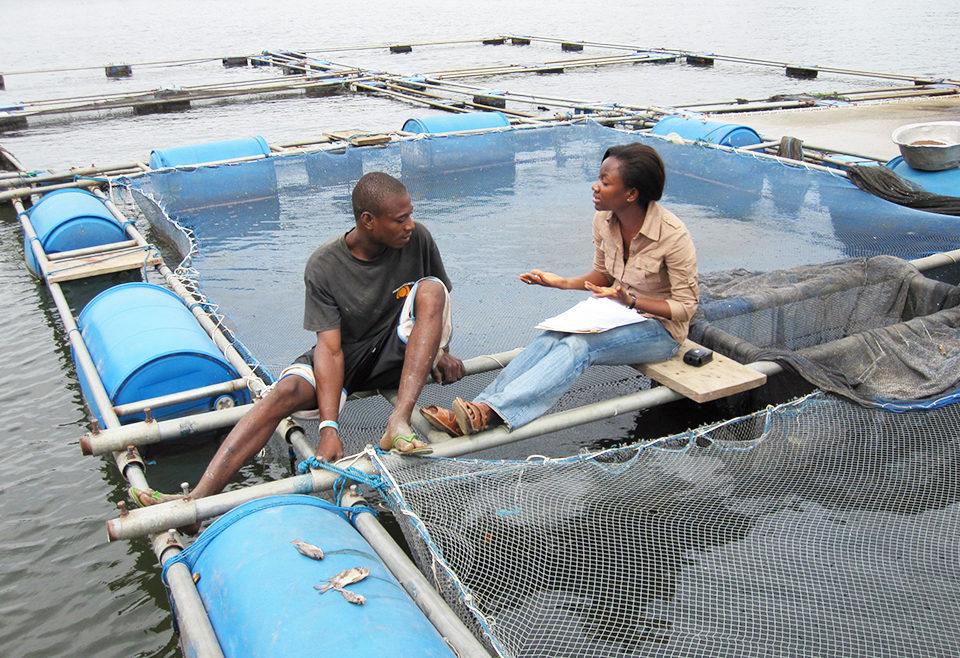
Fish and seafood consumption in Ghana has always been much higher than the global average of 17 kg/capita/year, with current annual estimates at 25-30 kg/capita or 60 percent of the dietary animal protein consumed. Fish are thus crucial for Ghana’s food security, which raises concerns about the sufficiency of fish production in the country. Marine fish catches, which constitute the bulk of domestic fish production in Ghana, have been declining 2 percent yearly from a base of 400,000 metric tons (MT) in 1995, whereas inland catches have flattened at about 85,000 MT since the early 2000s.
Meanwhile, domestic consumption has been rising at approximately 1 percent annually, with the current estimate at almost 1 million MT. Ghana has been a net importer of seafood to meet the deficit in domestic production, which has hovered around 50 percent for the past several years (Fig. 1).
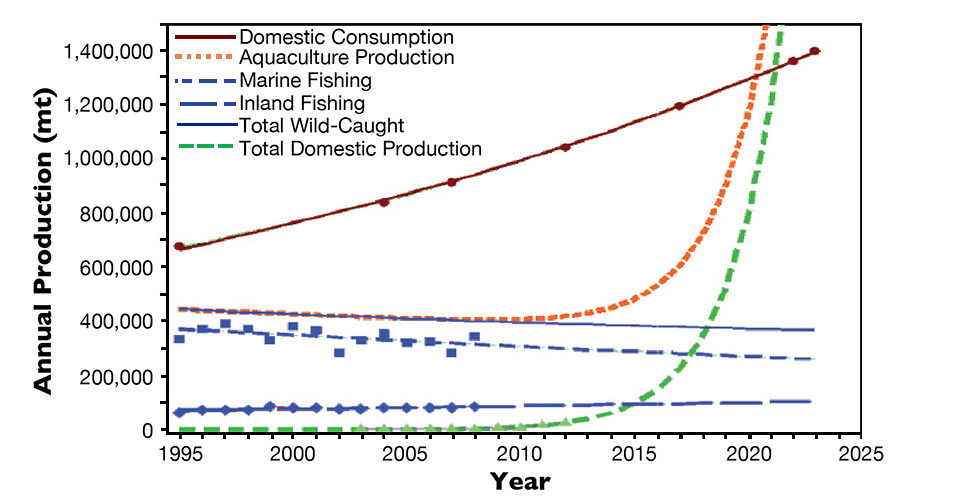
Fish farming in Ghana
Fig. 1 shows that the contribution of aquaculture to domestic fish production has overcome its historic fits and starts. Reaching about 30,000 MT in 2013, domestic aquaculture has been growing at an exponential rate of 50 percent/year for the past 10 years, stabilizing the deficit between domestic production and consumption. The gap stabilized at its highest point of almost 60 percent between 2011 and 2012, and is now narrowing (Fig. 2). In fact, if Ghana can sustain its current aquaculture growth rate, the gap should be closed completely between 2020 and 2021.
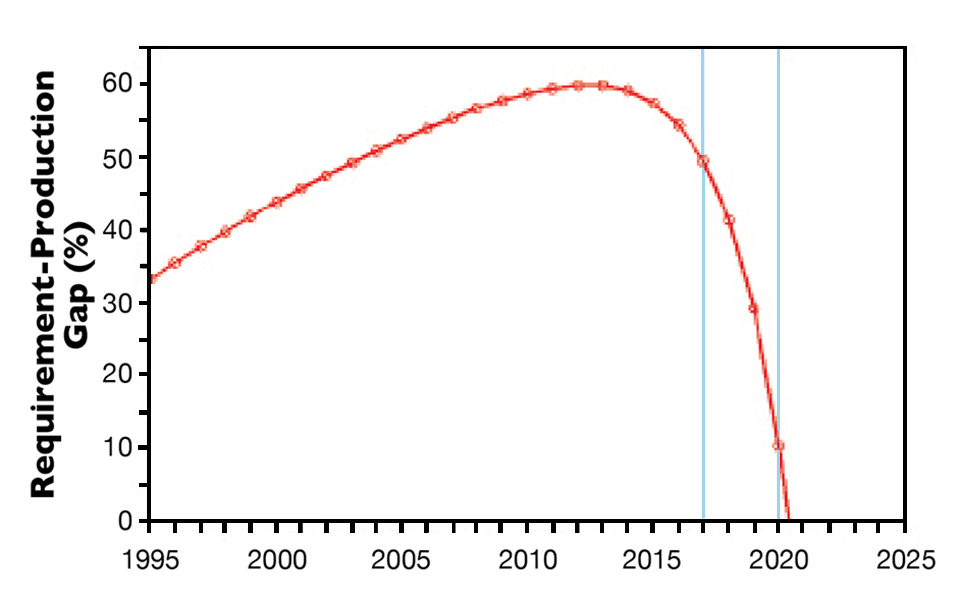
This is, of course, the most optimistic scenario. The growth of aquaculture in Ghana has been spurred by many positive developments, including domestic strategic planning for the sector, improving governance and an enabling business environment that has encouraged the establishment of at least one major fish feed mill in the country and the continuing development of a genetically improved strain of Nile tilapia.
Cage culture leads output
Behind the encouraging production numbers is a vibrant and growing cage culture subsector that emerged only about a decade ago and an anemic pond culture subsector that has operated in the country since the 1950s. About 95 percent of all domestic aquaculture production reported to the Food and Agriculture Organization (FAO) of the United Nations is Nile tilapia, the rest being mostly African catfish produced in tanks or in ponds as polyculture with tilapia. Of the tilapia production, upwards of 90 percent of the total volume reported in Ghana was from cage systems, with ponds contributing only 1,000 to 1,500 MT in 2013.
Based on surveys conducted in 2010 to 2012 by U.S.-based Virginia Tech and Kwame Nkrumah University of Science and Technology (KNUST) in Ghana, there are currently between 70 and 100 cage farms in Ghana. Of these, the top several farms appear to account for most of the 27,000 MT of tilapia produced in 2013.
Meanwhile, reports estimate the number of pond-based farms in Ghana at 4,000 to 6,000, with a total area of 600 to 1,000 ha. These numbers have not been updated since 2006, although a study published in 2008 reported an annual rate of growth in pond-based fish farms at 16 percent.
At the estimated pond area, pond productivity would average 1,500-2,500 kg/ha – indicating grossly underproductive ponds. Research and outreach activities undertaken by Virginia Tech and KNUST with sponsorship by the U.S. Agency for International Development AquaFish Innovation Lab have been aimed at addressing the combination of low productivity and potential underreporting of pond production that is leading to relegation of the subsector to the background.
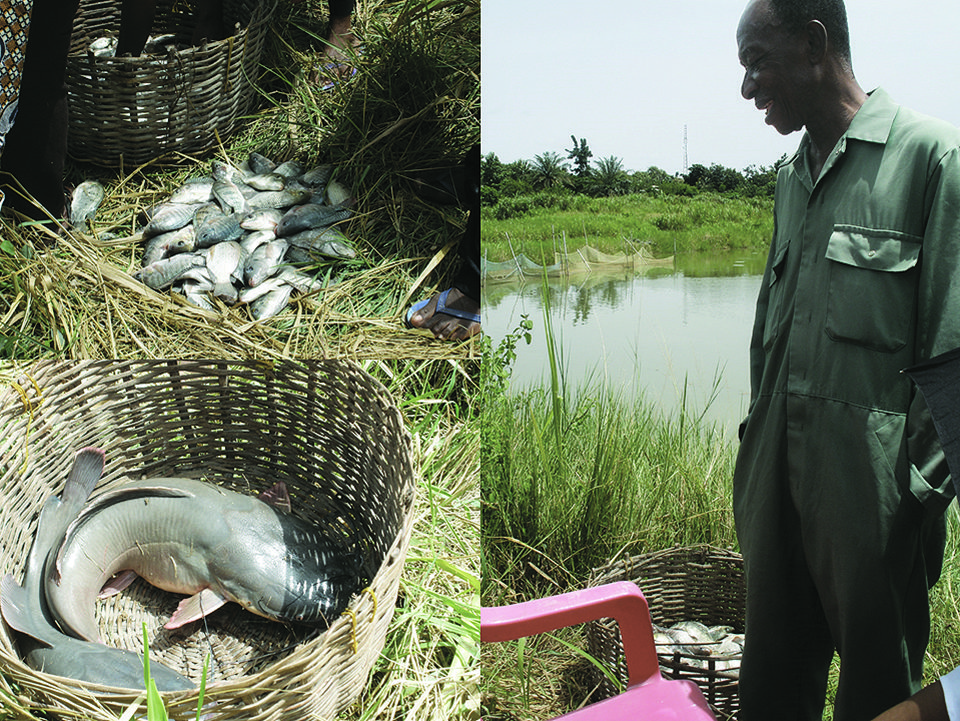
Strategic role for pond aquaculture
At an average breakeven production cost of more than $2/kg, tilapia produced in Ghana are much more expensive than in many countries in Africa and globally. A 2011 study comparing Ghana’s tilapia retail prices to those in Egypt, China and the Philippines found prices were four to six times higher in Ghana and concluded that Ghana’s tilapia were not competitive on the international or local markets.
The authors surmise that growth of the industry and the ability of the producers to sell products have been sustained by the Ghana government’s ban on importation of tilapia into the country, which cannot be a permanent solution to the problem of high production costs. Furthermore, Togo, which shares its western border with Ghana, currently allows importation of frozen tilapia, where imported tilapia from China sold for about $1.50/kg in 2013.
Due to the porosity of the border between Ghana and Togo, and the proximity of the heart of Ghana’s aquaculture activity, the Volta Lake, to the Togo border, it is conceivable that even without direct legal imports, Ghana’s tilapia producers currently effectively compete in the international tilapia market. The leading cage producers in Ghana are already exploring avenues for export to other West African countries, citing slowing demand or the inability of local consumers to afford their product. All these trends do not support a ban on imports as a long-term solution.
Costly feed
The main reason for the high cost of tilapia in Ghana is the cost of feed, which at the current average price of about $1.70/kg and constituting about 70 percent of production cost in cage farming, makes it almost impossible to cut the cost of production. Both imported and locally manufactured feed are priced tightly around this average, implying that even having more local feed plants may not reduce feed prices significantly in the short term.
Compared to costs in Egypt, feed costs are three times as high in Ghana for feed that is about 30 percent crude protein. This is one significant reason the Ghana government should pay more serious attention to the improvement of pond aquaculture by facilitating access to the right types of feed and best aquaculture practices.
Done properly, pond aquaculture can cut the feed-conversion ratios obtained in cage culture in half. In addition, tilapia grown in ponds through grow-out and fattening can do well on extruded feed with 25 percent crude protein, the cheaper and most common type of feed used in Egypt but completely missing from the feed market in Ghana. Pond aquaculture in Ghana clearly has a huge potential for growth through sustainable intensification. Farm experiments the authors conducted recently in Ghana showed that productivity of 10,000-14,000 kg/ha is easily attainable with fertilization and supplementary extruded feed – and without the need for aeration.
Pond distribution improves food security
Another significant aspect of pond aquaculture in Ghana is that it is not geographically concentrated like cage culture is. Although mostly small in scale, farms are fairly uniformly distributed throughout the southern regions of the country. This ensures that what is produced is mostly consumed domestically, including by the poor, which meets the improved nutrition and food security objectives of aquaculture development.
Adopting low-cost technologies and sound, targeted policies to improve pond aquaculture will ensure that the price of tilapia targeted at the local market is reasonable. When productivity is increased, and the citizens of Ghana throughout the country can afford locally produced tilapia, food security will be increasingly within reach.
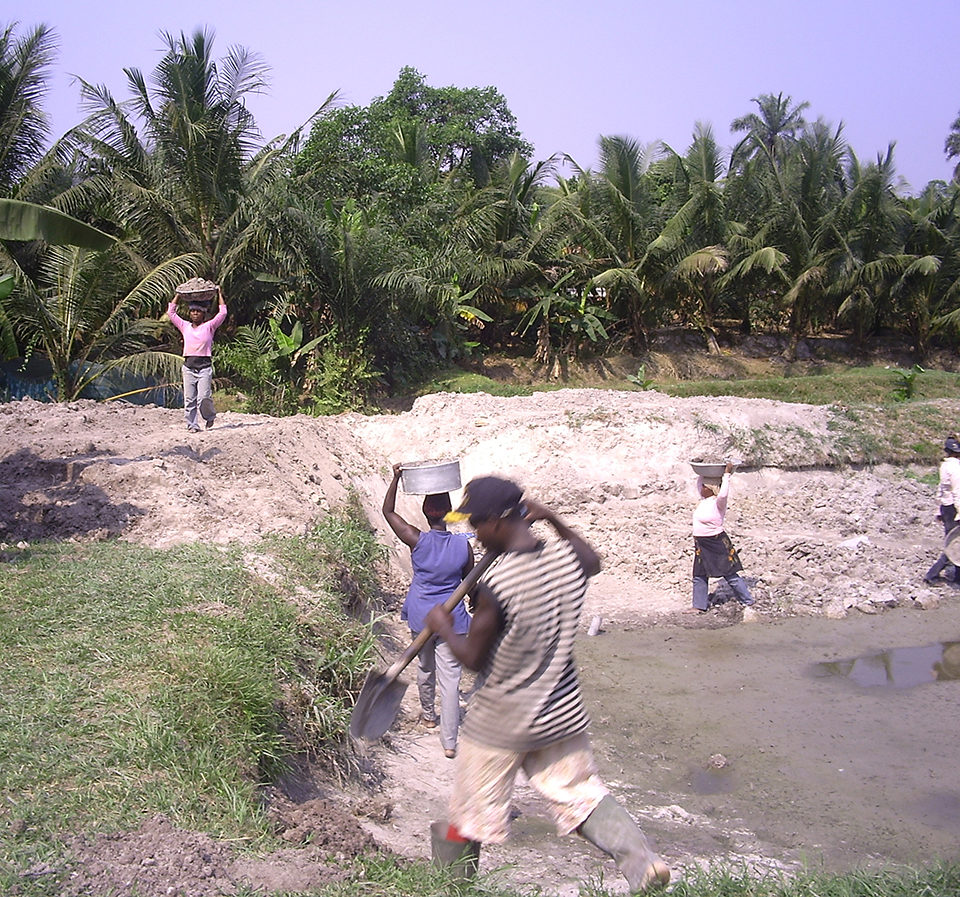
Focus on productivity
On-farm experiments have revealed that given the right feed and water quality, tilapia strain and adequate control of reproduction in ponds, growth is still reduced by up to 18 percent because of the shallowness of ponds. The average water depth in a large number of ponds surveyed in Ghana was 50 cm, only half the recommended depth.
More than 80 percent of the fish ponds in the Ghana were constructed manually, and in many parts of the country, levees are narrow and poorly compacted, and ponds may be only knee deep. While there are exemplary ponds in the country, the widespread presence of these lesser ponds indicates a lack of knowledge of pond construction or technical support from extension services, or both.
Other causes of low productivity learned from research include the use of mostly farm-made sinking feeds or just food residues; continuing widespread use of wild, unknown and mixed strains of tilapia due to inadequate dissemination of improved strains to farmers and the hatcheries that serve them; and limited and imperfect use of sex-reversal technology.
Where sex-reversed fingerlings are available, the authors have documented failure rates exceeding 15 percent in grow-out ponds, guaranteeing prolific reproduction and reduced growth in the absence of polyculture with predators such as African catfish. Some hatcheries claim much better rates of sex reversal, but access to these hatcheries is generally spotty, because the biggest and most successful hatcheries are concentrated around the Volta Lake – far from most of the pond farmers.
More research, extension needed
Since most of the causes of low productivity can be traced to inadequate extension or technical support, there is need for Ghana to revamp its extension services and increase efforts toward farmer education on proper pond construction and maintenance, as well as to provide support for mechanical excavation of ponds. Extension officers need to be better trained, and their numbers should be vastly increased.
The potential underreporting of pond production is also attributable to the shortage of extension officers, who would know where farms are and where new farms are springing up. Using publicly available satellite imagery, the authors’ research has documented two to seven times as many ponds as have been reported by the Fisheries Commission of Ghana in different regions. Work to update pond data has been going on in Ghana for years with the support of the FAO, but the slow pace of that work is another manifestation of inadequate government support for extension and basic data gathering to support sound aquaculture policies.
(Editor’s Note: This article was originally published in the July/August 2014 print edition of the Global Aquaculture Advocate.)
Authors
-
Emmanuel A. Frimpong, Ph.D.
Associate Professor
Department of Fish and Wildlife Conservation
College of Natural Resources and Environment
Virginia Polytechnic Institute and State University
156 Cheatham Hall
Blacksburg, Virginia 24061-0321 USA[117,100,101,46,116,118,64,112,109,105,114,102]
-
Iris E. M. Fynn
Department of Fish and Wildlife Conservation
College of Natural Resources and Environment
Virginia Polytechnic Institute and State University
156 Cheatham Hall
Blacksburg, Virginia 24061-0321 USA
Tagged With
Related Posts
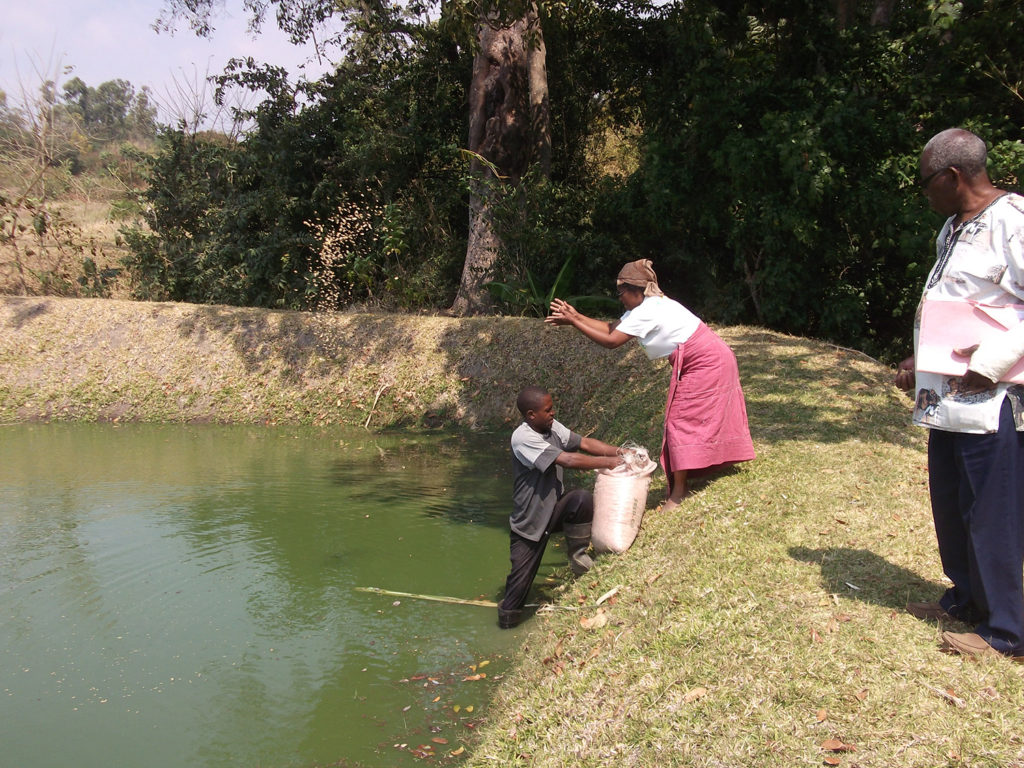
Innovation & Investment
Investing in Africa’s aquaculture future, part 1
What is the future that Africa wants? Views on how to grow aquaculture on the continent vary widely, but no one disputes the notion that food security, food safety, income generation and job creation all stand to benefit.
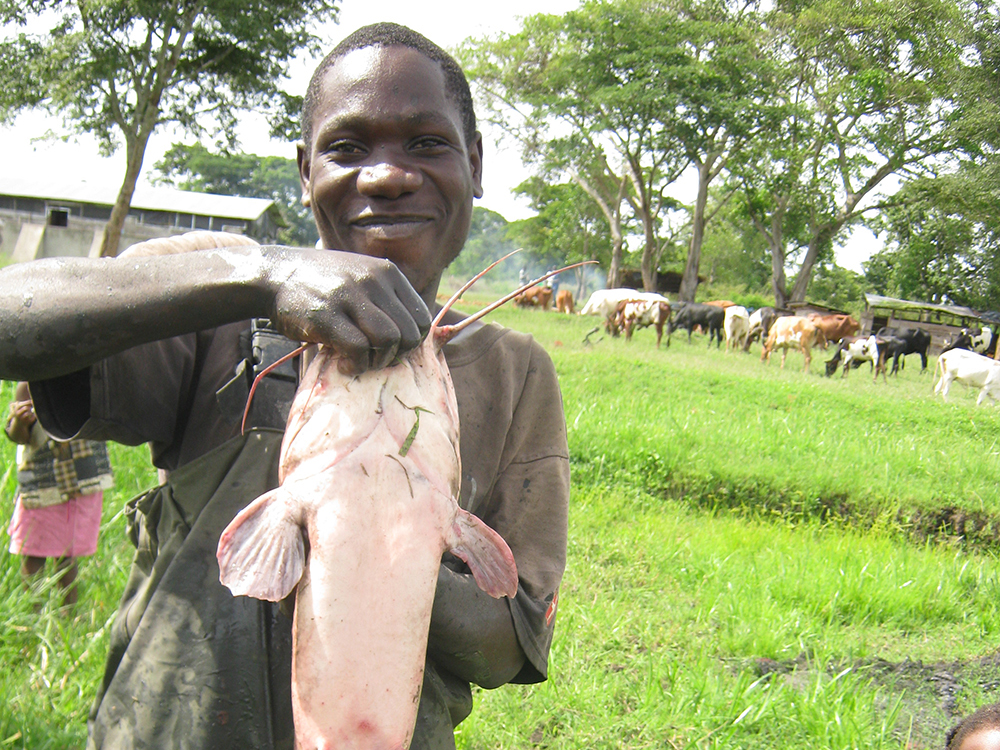
Innovation & Investment
Investing in Africa’s aquaculture future, part 2
Africa offers innumerable opportunities and a raft of challenges for developing a modernized aquaculture industry. Investors are interested, and pursuing with cautious optimism.
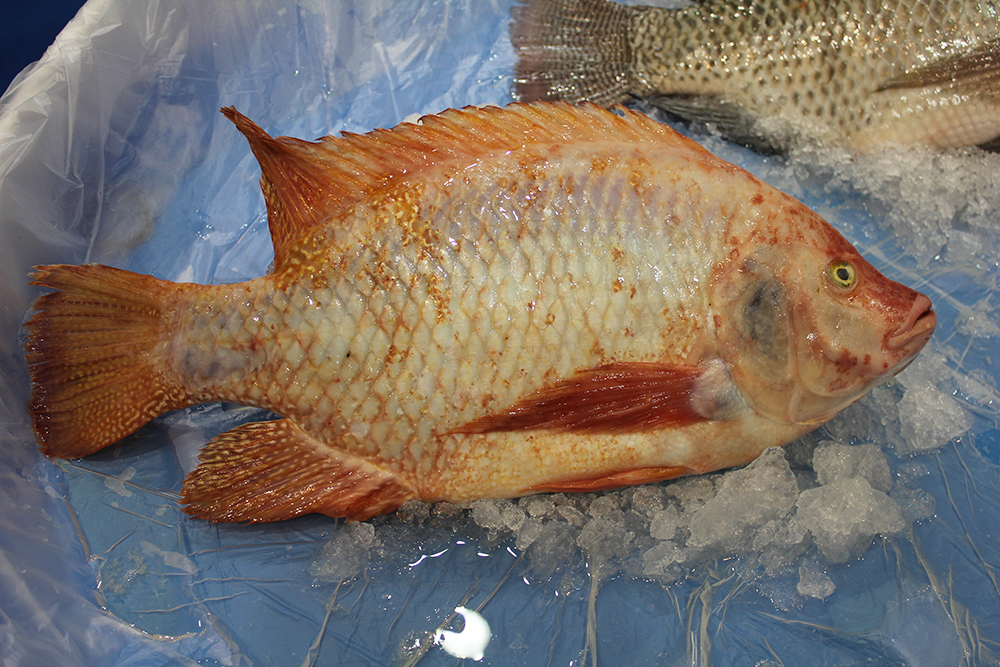
Intelligence
Adding value to tilapia to tap into U.S. market
New markets for tilapia and expansion of existing ones can be created by planning and implementing properly designed geographic strategies to meet discriminating consumer preferences. Low labor costs in most producing countries promotes value-adding by the production of fresh fillets.
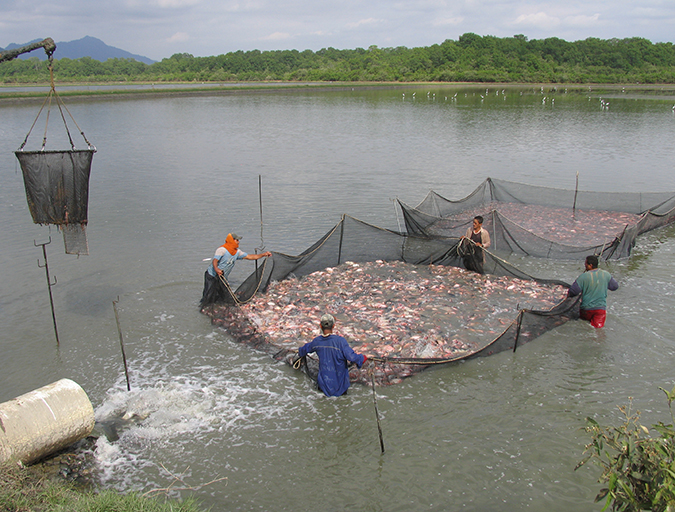
Responsibility
Addressing safety in Latin America’s tilapia supply chain
Over the last decade, the experience gained by many tilapia farmers combined with proficient programs implemented by local governments have significantly improved tilapia production in various Latin American countries like Colombia, Mexico, Ecuador and other important tilapia producers in the region.


